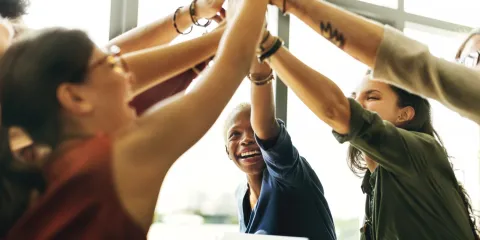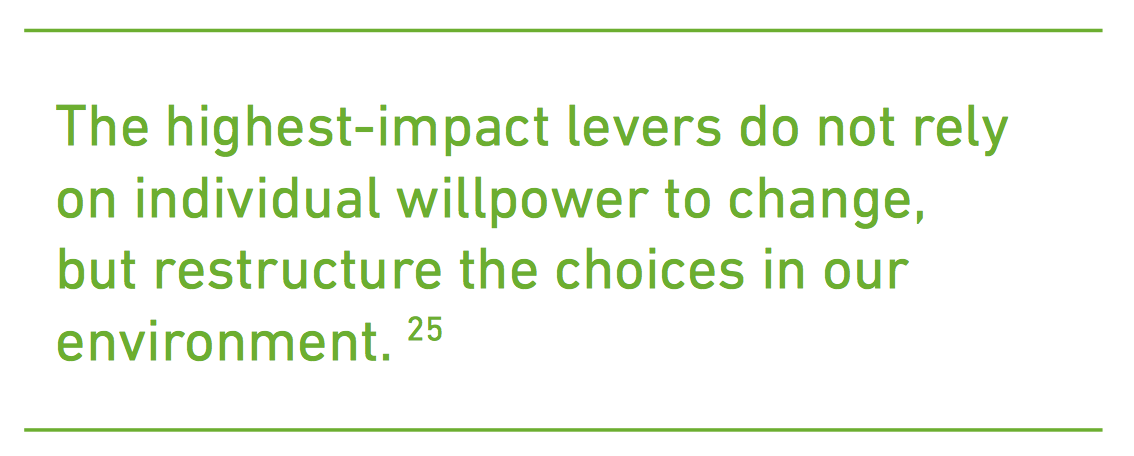Movement in meetings - a welcome change as we #WalkTheTalk

In early October, the NCD Alliance’s team enjoyed a somewhat rare opportunity to get together in person and align on our activities and workplan. With team-members located in several countries, operating in a virtual world is a well-honed skill, but there is nothing like the constructive productivity that transpires when we can come together in person. That being the case, there is also the temptation to cram as much into as little time as possible, and we have been known to feel more exhausted than invigorated immediately following such meetings!
Our latest team meeting was a little different to previous ones.
Making movement part of our agenda
Earlier in the year, Hannah Brinsden asked, “About that last meeting you went to... did you feel healthy?,” which was followed not long after by Terry Slevin's call to health organisations to "Be the change you want to see in the world". Their blogs were reminders of the importance of practicing what we preach when it comes to NCD prevention. Even though most of us are fit outside of work, our work typically involves extended time sitting at desks or around a table, and we recognise everyone can do with extra opportunities to move more and sit less. Indeed, our recent report on workplace wellness highlighted the need to "positively change the workplace environment to ensure that healthy food and physical activity form an integral part of workers’ daily routines".
Fiona Bull of ISPAH and the Thai Health Promotion Foundation have also inspired us, literally setting ‘arms and legs’ in motion at the World Health Assembly in May this year when they themselves led hundreds of delegates to “walk the talk”. They showed just how easy it is to make even the most serious and crowded of meetings less sedentary - by integrating movement as part of the agenda. We acknowledge that sometimes environmental circumstances and physical ailments can impede activity, but believe this is just incentive to be more thoughtful and creative!
And thoughtful and creative is exactly what our team was. Our own agenda allocated 10 minutes, 4 times each day for physical activity, kicking off with Morning Momentum, followed by mid-morning Energetic Elevenses. Our post-lunch, mid-afternoon lull was addressed with Aerobic Afternoons, and we wrapped up each day with an Evening Energiser. Each team member was in charge of leading one activity session.
The degree of planning that went in to each session varied, from impromptu walks to carefully researched exercise videos. But no one saw it as a chore; if anything, I think we all enjoyed planning our active meeting offerings.
What can 10 minutes of meeting movement look like?
- Mindfulness meditation with a trust exercise and yoga stretches.
- Deskercise, prompted by Thai Health's recent 'Let's Move More' campaign video
- Follow the leader-style activities corresponding with the first letter of each of our first names, such as Leaping Lucy, Karate Katie, and Jogging Jimena.
- Learning dance moves, including some Tahitian Fa’arapu and Zumba.
- Add an action to an evolving moving story - starting with the theme, “what happened when the king went for a walk”? Our king was on a horse ride, fell off his horse, went for a swim, took a dive to the bottom of the water, climbed out of the water and got up again, jousted on the banks of the water, did a little dance to himself, lassoed a wild boar, did a star jump in celebration, and finished his adventure rock climbing.
- Following retro aerobics instructions, such as a 1980s video of Jane Fonda as she ran a light aerobics class.
- Walks around the block and the nearby park, one time in (amused) silence, following funky-moves sure to have turned a few heads and raised a few eyebrows - but we were laughing too much to care or notice.
Through the work-day we somewhat seamlessly fit in 40 minutes of muscle movement we otherwise wouldn’t have had.
In the fresh but fine mornings some of us went for walks or runs in the great green spaces smattered through the city. A simple half hour brisk walk each morning added around 3000 steps to a day - which may not seem like many, but when there are some sedentary work days that amount to no more than 4000 steps, 3000 is nothing to be sneezed at. Those who live in London walked, cycled or embraced London’s relatively efficient public transport services.
The added bonuses: extra energy and alertness
While we all felt satisfied that we had upped the physical ante, there were resounding side benefits too; we all felt fresh throughout the day, we were consistently engaged and productive, we found the distinct physical shifts between agenda items marked a brain shift as well, we didn’t just look longingly at the sunshine outside but took the inspiration to get outside in it, it felt free to considerately stand through the meeting, and we had lots of fun.
Walking the talk on NCD prevention
In recent weeks WHO has also increased their NCD prevention efforts in-house, including the addition of mobility breaks at several meetings such as Western Pacific Region’s recent committee meeting’s rendition of ‘Stayin’Alive’ (featuring WHO Director General Dr Margaret Chan herself!). The recent Global Health Forum in Taiwan also ran physical activity breaks. With this fresh momentum at global health meetings, we look forward to learning more at the 6th International Congress on Physical Activity and Health (ISPAH) in Bangkok in November, to seeing more movement in future meetings. We shall be sure to share new ways for making meetings more mobile at our next Global NCD Alliance Forum in late 2017.
Being active shouldn’t feel arduous or be seen as a disruption; Active meetings are stimulating meetings - we encourage you to join us in walking the talk to reduce and prevent NCDs.
Let us know what your organisation does, or share a creative or culturally sensitive physical activity break you have enjoyed at a recent meeting or conference. Share on twitter with #WalkTheTalk.
About the author
Lucy Westerman (@lewest) is NCD Alliance's Communications and Policy Officer. Lucy leads NCDA's social media presence and engagement, and in addition to broader communications contributions, is curator of the NCD Alliance blog. While committed to all aspects of reducing the burden of NCDs on people and society, her policy passion is NCD prevention, evident in her focus on physical activity and alcohol within NCDA's advocacy work on NCD risk factors. Lucy is based in the UK with her family, where her health promotion skills are frequently tested by her children, illustrating that depending on informed rational choices isn't the most reliable approach to protecting health, and that environments need to support healthy behaviour.


